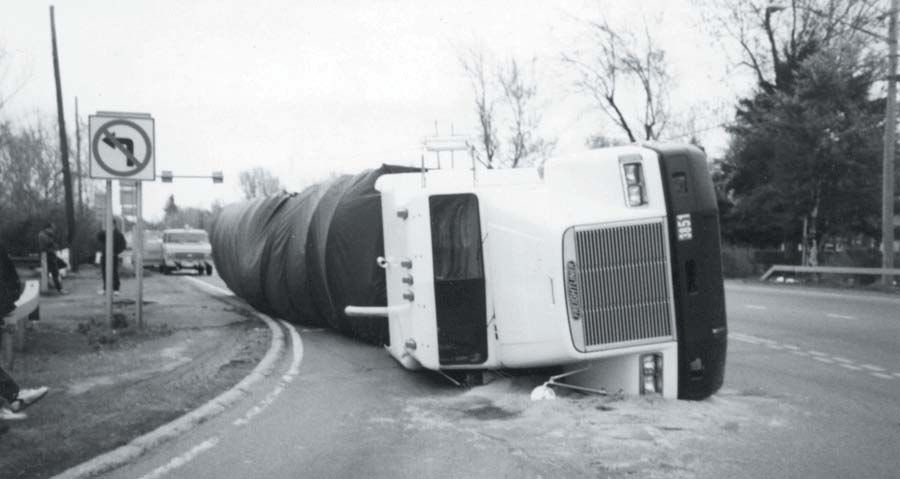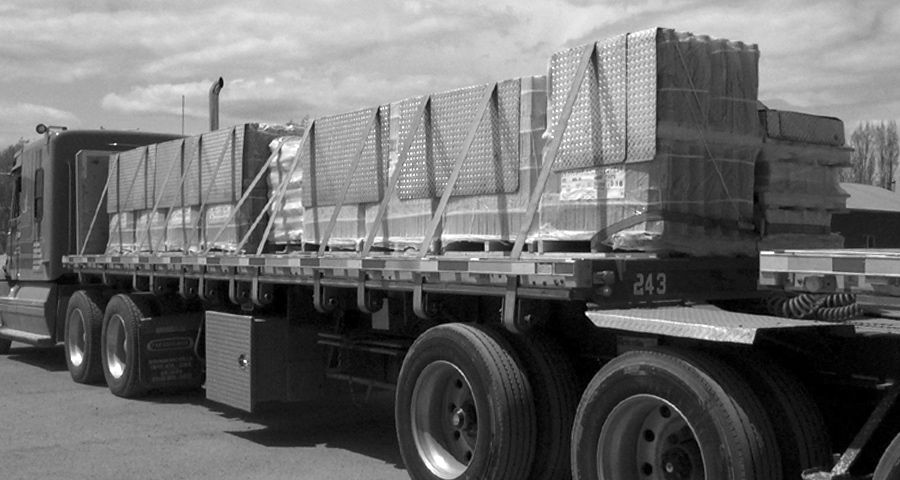Review Questions - Click On The Picture To Begin...

What types of freight need to be secured properly?
- Intermodal containers.
- All freight should always be properly secured while driving.
- Hazardous materials.
- Equipment used for vehicle operation.
Quote From The CDL Manual:
-
Any cargo and dangerous goods/hazardous materials, including:
- All general freight.
- All equipment carried for vehicle operation.
- Intermodal containers and their contents.
- Some specific commodities have additional or different securement requirements (see later sections of this Handbook).
- Additional requirements under separate regulations may also apply for transportation of certain types of dangerous goods or hazardous materials.
Cargo
Next
An anchor point is defined as:
- A rail along the side of a vehicle that protects the side of the vehicle from impacts.
- A vertical barrier across the front of the deck of a vehicle to prevent forward movement of cargo.
- The load carrying area of a truck, trailer, or intermodal container.
- Part of the structure, fitting, or attachment on a vehicle or cargo to which a tiedown is attached.
Quote From The CDL Manual:
Anchor point:
Part of the structure, fitting, or attachment on a vehicle or cargo to which a tiedown is attached.
Prev
Next
In cargo securement, a wedge is defined as:
- A short piece of material, usually wood, nailed to the deck to reinforce blocking.
- A tapered piece of material, thick at one end and thin at the other, used to help keep cargo from moving.
- A rail along the side of a vehicle that protects the side of the vehicle from impacts.
- The depression formed between two cylindrical articles when they are laid with their eyes horizontal and parallel against each other.
Quote From The CDL Manual:
Wedge:
A tapered piece of material, thick at one end and thin at the other, used to help keep cargo from moving.
Prev
Next
Which of the following is not a reason why loads should be secured?
- Make it look pretty
- Avoid fines and citations
- Prevent damage to the cargo
- Prevent loss of load
Quote From The CDL Manual:
Why?
- Loss of life
- Loss of load
- Damage to the cargo
- Damage to the vehicle
- Issuance of citations/fines to driver/carrier
- The vehicle being placed Out-of-Service.
- A crash
Prev
Next
The North American Cargo Securement Standard cover vehicles weighing:
- Over 4,500 lbs
- Over 10,000 lbs
- 26,001 lbs
- Less than 10,000 lbs
Quote From The CDL Manual:
North American Cargo Securement Standard
What does the Standard cover? (Section 1.1)
- Commercial vehicles (including a combination of vehicles) that are operated on a highway and have a gross vehicle rating over 4,500 kg (10,000 lb.)
Vehicles
Prev
Next
The load carrying area of a truck, trailer, or intermodal container is referred to as the:
- Deck
- Headboard
- Well
- Bulkhead
Quote From The CDL Manual:
Deck:
The load carrying area of a truck, trailer, or intermodal container.
Prev
Finish
Please select an option





 Related Cargo Securement Terms That Every Driver Should Know:
Related Cargo Securement Terms That Every Driver Should Know: 



 TT On Facebook
TT On Facebook